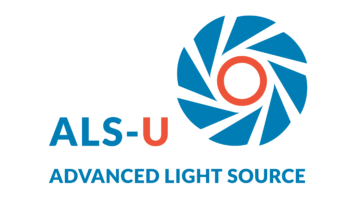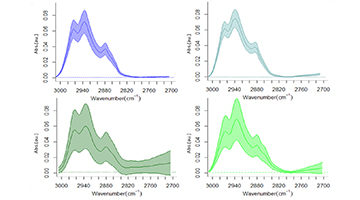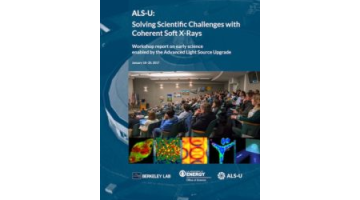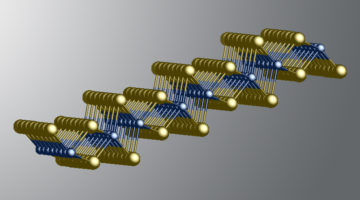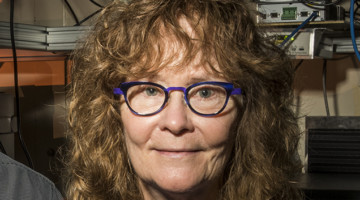The “official” hashtag of the ALS User Meeting is #ALSUserMtg. If you’re attending, the ALS invites you to use the hashtag to share photos of your experience: post your poster, your sunset selfies, or your favorite speaker(s). Report on the latest science news, meetups with colleagues, or give your review of the food! If you can’t make it to the meeting this year, you can follow what’s happening on Twitter, #ALSUserMtg, from October 2-4, 2017. Read more »
All News & Updates
ALS-U Online User Forums to be Held Oct. 31 and Dec. 6
Want to learn more about the progress of the ALS-U Project and have the opportunity to provide feedback on the direction of new and rebuilt beamlines? Attend the upcoming online forums on Oct. 31 and Dec. 6 from 10-11 a.m. PT. To receive further details, RSVP here. Read more »
Microbes Linked to Drier Human Skin
Genetic analyses and infrared studies have found that archaea, a type of microbe commonly found in extreme environments, are also found on human skin. The results suggest that an increase in archaea is linked to reduced skin moisture and that they are most abundant in subjects younger than 12 and older than 60. Read more »
UEC Webinar: Learn What’s Involved in Joining the UEC
The nomination period for new Users’ Executive Committee members will open soon. Interested in learning more about what the UEC does and what’s involved in being a member? Tune in to a webinar on Thursday, Oct. 12, 10-11 a.m. PT. Current UEC members will discuss the responsibilities and the importance of the role and will respond to online questions from the audience. To receive further details, RSVP here. Read more »
Project Director’s Update on ALS-U
In the last year since ALS-U received approval of mission need (CD-0) from DOE, we’ve made a lot of progress. I’d like to share some updates with you as well as offer opportunities for our users to engage in the next phases of the project. Read more »
ALS-U Science Workshop Report Now Available
The report from the January 2017 workshop, “Solving Scientific Challenges with Coherent Soft X-Rays,” is now available for download. The report details scientific challenges that ALS-U will address early on and identifies the instruments and tools essential for taking full advantage of ALS-U’s capabilities. Read more »
Researchers Confirm New 2D Topolgical Insulator
Researchers have established that a particularly stable form of WTe2 is a two-dimensional topological insulator, confirming recent predictions. The findings should provide new opportunities for fundamental studies of topological phenomena and for next-generation spintronic applications. Read more »![]()
![]()
Guillaume Freychet, Physicist Postdoctoral Fellow
Guillaume Freychet is a postdoctoral fellow at ALS Beamlines 7.3.3 and 11.0.1.2, the small- and wide-angle x-ray scattering (SAXS/WAXS /GISAXS) beamlines. His research is focused on the development of algorithms and data treatments for various scattering techniques. Read more »
Berkeley Lab and SLAC Host Hard X-Ray Photoemission Conference
Earlier this month, Berkeley Lab and SLAC hosted the 7th International Conference on Hard X-Ray Photoelectron Spectroscopy (HAXPES). This biennial meeting has grown from a small workshop held at ESRF in 2003 with about 50 participants, to a truly international event, which this year attracted 150 participants from 20 countries. Read more »
Carolyn Larabell to Receive Shirley Award at ALS User Meeting
Carolyn Larabell, Director of the National Center for X-Ray Tomography (NCXT), centered around ALS Beamline 2.1, has been selected by the ALS Users’ Executive Committee to receive the 2017 David A. Shirley Award for Outstanding Scientific Achievement at the ALS. Read more »
- « Previous Page
- 1
- …
- 102
- 103
- 104
- 105
- 106
- …
- 139
- Next Page »

